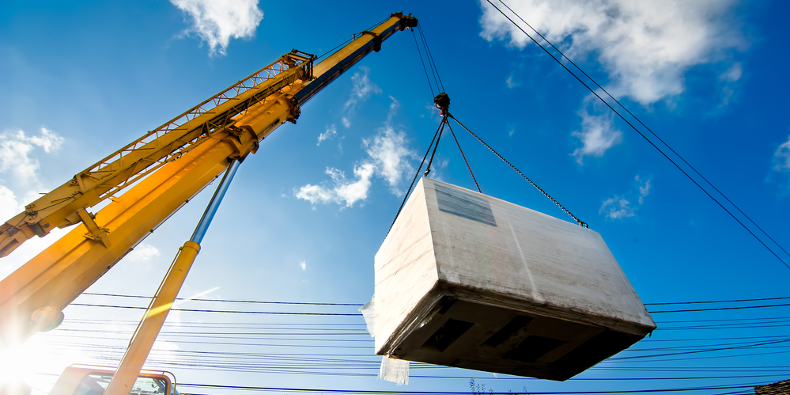End-To-End Coupling Solutions for Cranes and Hoists

When it comes to gearbox coupling applications, some misalignment is unavoidable. This is especially true for cranes and hoists due to their very heavy loads. Fortunately, you can manage misalignment by choosing the right couplings. Here are some of your options specifically for cranes and hoists.
Connecting the Gearbox and Cable Drum
Recommended for crane-lifting mechanisms, barrel couplings are used to connect the cable drum with the gearbox output shaft and are also used in winch conveyors and platform hoists. Mounting inaccuracies, structural deformation and normal wear and tear in moving parts all lead to angular and axial shaft misalignment, generating additional forces in the gearbox output shaft. Without the flexibility provided by the coupling, the forces created by the alternating bending loads can lead to shaft breakage and severe damage to bearings and gears.
When installed between the cable drum and gearbox, barrel couplings perform the function of an articulated joint, making the connection statically determinate and avoiding high bending moments. They can also handle heavy loads, making them ideal for cranes with very high weight limits, such as container cranes. The RINGFEDER® Barrel Couplings TNK, for example, can handle loads up to 685,000 Nm
Connecting the Gearbox and Drive Motor
In crane applications, couplings can also be used to connect the drive motor and gearbox. You typically have three options, all of which are designed to compensate for angular, radial and axial shaft misalignments:
Claw coupling
Torsionally flexible, these couplings transmit torque via elastic buffers made from Perbunan (Pb), which are joined together as an intermediate ring. This ring dampens shocks and torsional vibrations, is resistant to oil and can handle wide temperature Because of their dampening capabilities, claw couplings are preferable in many crane applications.
Disc coupling
Unlike claw couplings, which contain rubber, rigid, all-metal disc couplings require no lubrication and will operate reliably with little to no wear or maintenance.
Gear coupling
These couplings transmit torque via hubs with crowned gear teeth, which are in permanent mesh with the straight gear teeth of the sleeves. This option provides the most torque for a given coupling size, giving you even more design options.


Comment